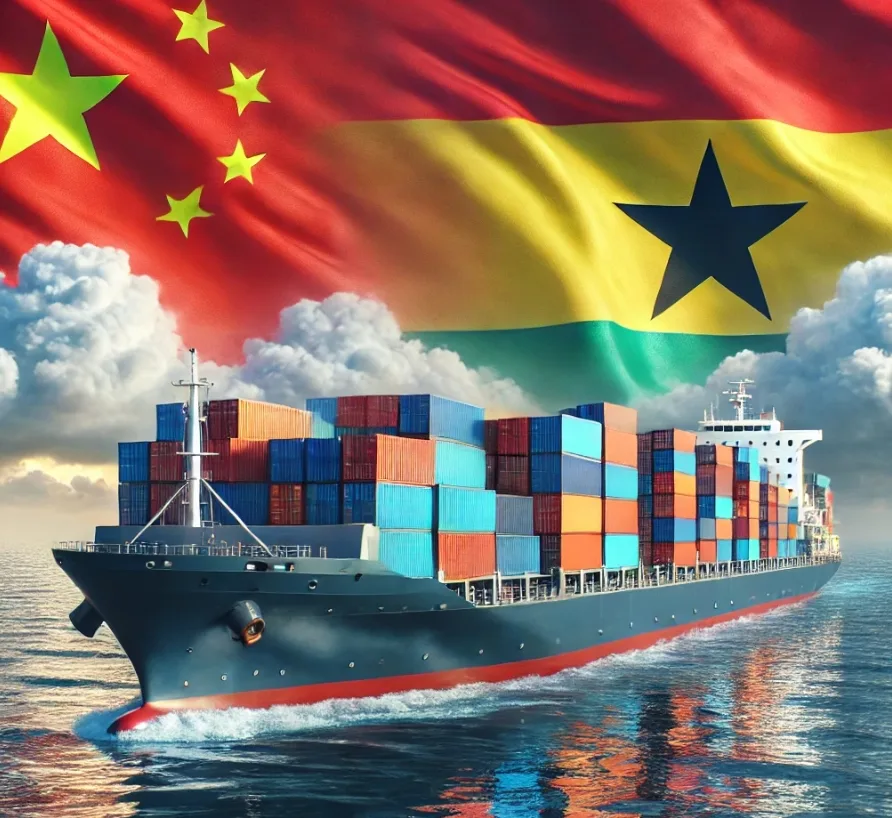- By TOP CHINA FREIGHT
- September 8, 2025
- Sea Freight, Shipping
Table of Contents
Shipping from China to Ghana by sea is a critical component of international trade for importers and exporters. Businesses must consider transit times, shipping costs, customs procedures, and freight optimization strategies to ensure timely delivery and cost efficiency. Understanding these aspects can significantly improve operational efficiency and reduce unforeseen expenses.

How to Choose the Right Shipping Method
Selecting an appropriate shipping method impacts both cost and delivery reliability:
Multimodal shipping is particularly useful when inland warehouses are distant from ports, balancing speed and cost. Businesses often combine FCL and multimodal strategies to meet urgent deadlines without overspending.
What Factors Affect Sea Freight Transit Time to Ghana?
Major Chinese ports like Shanghai, Shenzhen, Ningbo, and Guangzhou differ in shipping frequency, congestion, and efficiency
Tema Port offers faster handling and higher capacity, while Takoradi Port serves specialized or regional cargo
FCL shipments typically move faster due to dedicated container space, while LCL shipments require consolidation, slightly extending transit time
Monsoons, typhoons, or high-volume periods may introduce delays of several days
Accurate documentation expedites processing; missing or incorrect paperwork can add extra days
How to Calculate Total Shipping Costs

Shipping costs include multiple components beyond basic freight:
| Container Type | Cost (USD) | Volume | Notes |
|---|---|---|---|
| 20ft FCL | 2,200–2,800 | 28 m³ | Standard cargo |
| 40ft FCL | 3,800–4,500 | 56 m³ | Large shipments, lower per-unit cost |
| LCL | 100–150 per m³ | Varies | Consolidated shipments |
Additional charges can include port handling, documentation, customs duties, insurance, and inland transport. Using a freight forwarder can secure preferential rates and consolidate shipments for cost efficiency.
How Freight Forwarders Optimize Sea Shipping
Freight forwarders enhance efficiency and reliability by:
1.Scheduling Optimization:
Avoid port congestion and reduce waiting times.
2.Documentation Management:
Ensure bills of lading, commercial invoices, and certificates of origin are accurate.
3.Customs Clearance Assistance:
Minimize delays and fines.
4.Real-Time Tracking:
Monitor shipments to manage inventory proactively.
5.Cost Negotiation:
Access to discounted carrier rates.
Furthermore, forwarders help consolidate shipments and maximize container space, reducing per-unit costs without sacrificing delivery speed.
Tips for Proper Packaging
Ensure cargo fits securely and efficiently
Reduce damage risk and environmental impact
Enhance security during transit
Expedites customs clearance
Maximizes space, reduces per-unit cost
Prevents fines and delays at ports
Case Study: Electronics Shipment to Ghana

A Ghanaian importer shipped a 40ft FCL from Shenzhen:
- Route: Shenzhen → Tema Port
- Transit Time: 28 days
- Cost: USD 4,200, including documentation and port charges
- Outcome: Real-time tracking and pre-cleared documents avoided storage fees and delays.
This demonstrates the importance of forwarder coordination, accurate documentation, and careful route selection.
How Seasonal Factors Affect Sea Shipping
Increased cargo volumes lead to port congestion
Typhoons and monsoon can add 3–7 days
Extended handling adds 5–7 days
How to Consolidate Shipments for Cost Savings
Consolidation combines smaller consignments into a single container:
- Reduces per-unit shipping cost.
- Minimizes port handling fees.
- Eco-friendly by optimizing container utilization.
Consolidation may add 2–5 days at origin ports for cargo accumulation, but professional coordination minimizes delays.
Advantages and Disadvantages of Sea Freight
| Pros | Cons |
|---|---|
| Cost-effective for bulk shipments | Slower than air freight |
| Supports full container loads | Weather-dependent |
| Environmentally friendly | Requires accurate planning |
| Handles bulky or hazardous goods | Risk of port congestion |
Selecting the appropriate shipping option depends on shipment volume, urgency, and budget constraints.
Conclusion
Sea freight from China to Ghana typically takes 25–35 days, influenced by ports, shipping methods, and seasonal factors. Proper packaging, accurate documentation, route planning, and professional freight forwarding ensure cost-efficient, reliable delivery. Advanced planning and real-time tracking further optimize your supply chain, reduce risks, and improve operational efficiency.
Need a Shipping Quote?
If you want expert guidance and peace of mind, our team is ready to assist.
TJ China Freight offers tailored solutions to help businesses of all sizes ship more reliably from China.

FAQs
Q1:Can I expedite sea shipments?
Use FCL with priority shipping and pre-cleared documents to slightly shorten transit; sea freight remains slower than air.
Q2:Which port in Ghana is ideal for large shipments?
Tema Port offers fast handling and high capacity; Takoradi suits specialized or regional cargo.
Q3:How do customs delays affect transit?
Incomplete or incorrect documentation can add 3–7 days; accurate invoices, packing lists, and certificates prevent delays.
Q4:Can I track shipments in real time?
Yes, forwarders provide container tracking, allowing inventory planning and proactive issue resolution.
Q5:Does cargo consolidation slow delivery?
Yes, accumulation may take 2–5 days, but reduces per-unit cost and optimizes container space.
